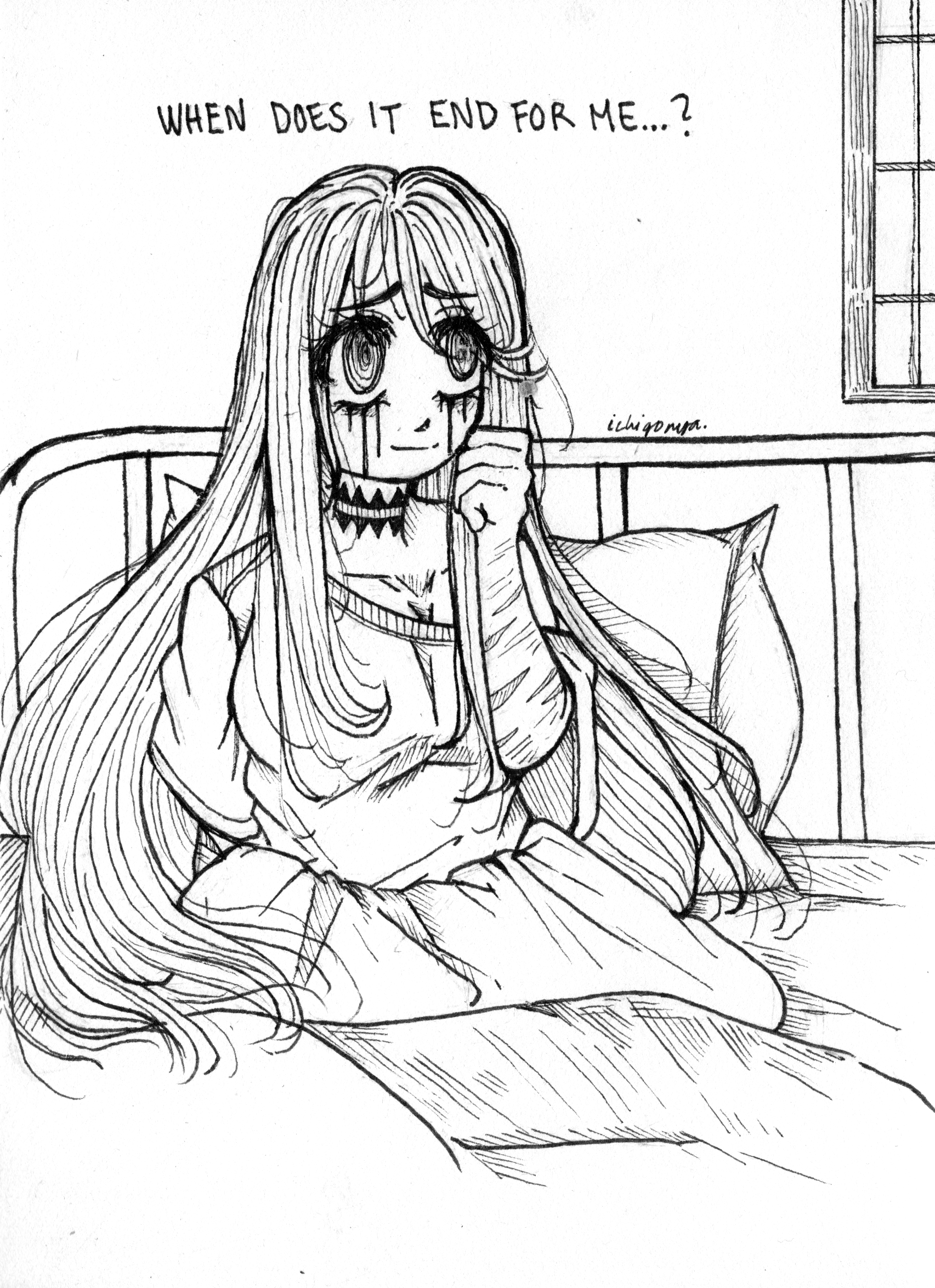Wondering
Being admitted to a psychiatric facility once is enough of a troubling and traumatic experience. Especially if your stay gets prolonged, ranging from several months to over a year, the ward will most likely become a place you never want to find yourself in ever again. And for those who get the proper help they need on their first and longer ward period, there might not ever be a reason to go back – and that is always the end goal.
But for those of us who might not stay at the ward for months but only weeks, it's more common to end up in the same situation again. The kind of mental illnesses that you have obviously contribute to this as well, and for someone with a mood disorder like depression or bipolar it's more likely they won't spend extended periods of time at the facility but instead are more likely to come back at another time.
when does it end for me.
And I am definitely one of those people. My main diagnosis is BPD, borderline personality disorder, but I am also diagnosed with MDD, major depressive disorder, among a few others. When something upsetting happens to me, it triggers my BPD symptoms, which in turn can send me into a deep depressive episode. Comorbidity in mental illnesses tends to work like that: something causes the symptoms of one disorder to worsen, and they subsequently trigger the symptoms of another. Usually the reason for hospitalization for me is suicidal behavior and plan to commit suicide. This is caused by intensified symptoms of my MDD, which are likely related to my BPD.
That is why it is common for me to end up at the ward over and over again. It's even become a pattern for me to be hospitalized every summer, and I like to joke about that a lot. "Hey again, I'm back here for the regular summer visit!", shit like that. I don't know if the nurses ever found that amusing.
There's a variation of the common hide-and-seek game in Finland called "kirkonrotta" or "kirkkis" (lit. 'church's rat'). One kid is chosen as the seeker, and the rest are hiders (rats). The seeker counts out loud while facing a wall, tree, or something similar, to cover their eyes. The place where the seeker was counting is determined as "the shouting spot". After the countdown, the seeker goes around looking for the hiders, and when they spot someone, they sprint back to the shouting spot and yell out the name of the hider they saw. This continues until all of the rats have been found.
What makes kirkkis different from regular hide-and-seek, though, is the fact that you as a hider are able to save yourself from being caught even after you've been spotted by the seeker. To do this, you have to run up to the shouting spot before the seeker, touch the tree or wall, shouting "omat" (lit. 'own'). You are also able to save the rats who have already been caught in a similar fashion: you sneak up to the shouting spot without the seeker noticing you, and touch the tree or wall, shouting "kaikki pelastettu" (lit. 'everyone saved').
The cycle of going from one hospitalization period to the next feels like an endless game of kirkonrotta to me. I am the hider, hiding away from the depression that is looking for me. I can see them before they notice me, and I try my absolute hardest to sneak up to the shouting spot to save myself. But I'm always too late, I always start running too late. And so I'm caught, trapped in the hospital bed of the shouting spot, looking for someone to get me out. And someone is running toward me, another hider, another rat, and their face is familiar. They are so close to the spot, almost there – but before they get to the tree, the seeking shadow of depression gets them first.
And there we are, Kid and me, stuck in a never-ending game of running away from the inevitable.
Pelastakaa,
ichigonya
